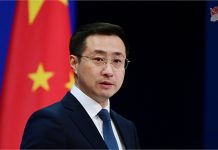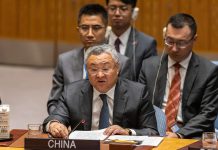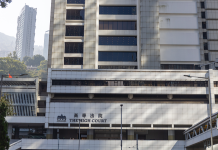Shi Liping is famous for her clever hands. From her mother and grandmother, the 55-year-old inherited the skills of Miao embroidery, the traditional art of the Miao ethnic community known for its rich colors and delicate designs, and listed as an intangible national heritage.
To promote the art, in 2008 she established a company in her hometown in Songtao Miao Autonomous County, Guizhou Province in southwest China. The province used to have the biggest population of poor people. She hired locals, mostly laid-off workers, farmers and women who were left behind as their family members went to work in the cities, and today, the embroidered products they make, such as bags, accessories and beddings, are sold both at home and abroad.
During last year’s COVID-19 epidemic, the company adjusted its marketing strategies to include more online channels and focus more on the domestic youth market.
“The craft can not only help villagers earn more and preserve traditional culture, but can also become an industry to vitalize rural areas in my hometown,” Shi told Beijing Review.
Transition period:
According to official statistics, the last 98.99 million rural residents living under the poverty line found their way out of poverty over the past eight years. All of the officially listed 832 impoverished counties and 128,000 impoverished villages have got off the poverty list.
However, the government recognizes that although people have shaken off poverty, the development in some areas is not yet strong. It is therefore necessary to improve the monitoring and assistance mechanism so that people in such areas will not fall back into poverty.
So according to the No.1 Document released by the Central Government in February, a five-year transition period will be set aside for counties that have shaken off poverty to consolidate the outcome.
As the first policy statement released by the central authorities each year, the No.1 Document is seen as an indicator of policy priorities. Agriculture and rural areas have remained high on the agenda for 18 consecutive years since 2004. This year, it stresses rural vitalization and accelerating the modernization of agriculture and rural areas, listing the targets and tasks for 2021, as well as a broader vision for the period up to 2025.
Lu Jixia, a professor at the China Agricultural University in Beijing, said the five-year transition period will indicate whether the poverty alleviation results have been consolidated. If there is no large-scale reemergence of poverty, it means that the assistance policies have truly changed the face of poverty-stricken areas, Lu told The Beijing News.
A new government body, the national administration for rural vitalization, has succeeded the State Council Leading Group Office of Poverty Alleviation and Development, which earlier oversaw poverty alleviation efforts, to carry out the new work.
Hong Tianyun, deputy head of the new administration and a former poverty relief official, said ensuring a smooth transition from poverty alleviation to rural vitalization is the agency’s priority.
“We will continue to support industrial development of areas that have got rid of poverty and build infrastructure there,” Hong said at a recent press conference in Beijing.
That will include industrial parks, public service facilities and community governance capability, especially in resettlement areas.
Priority areas:
Agriculture, rural areas and farmers are the top priorities during the 14th Five-Year Plan (2021-25) period. With the disruptions in supply chains caused by the COVID-19 pandemic last year and rising food prices in the past, self-reliance in grain production has become a primary requirement.
The document said the national capability to ensure the supply of grain and major agricultural products will be strengthened. This includes guaranteeing the grain planting area and improving the yield.
The “red line” is ensuring about 120 million hectares of arable land, roughly the size of South Africa. An additional 6.7 million hectares will be enhanced into high-yield farmland by the end of this year to ensure stable production. The target grain output is over 650 billion kg.
Science, technology and equipment support for agriculture will be strengthened. By 2025, about 500 agricultural modernization demonstration zones will be established. Agricultural products and food security will be improved and green development of agriculture advanced.
Zhao Lixin, head of the Institute of Environment and Sustainable Development in Agriculture, Chinese Academy of Agricultural Sciences, told Beijing Review the government should issue a detailed plan for green agriculture. Also, scientists and researchers should conduct research to address the specific difficulties faced by farmers.
Building a modern breeding system and a green and healthy aquaculture, and rural industrialization are some of the other major tasks.
The No.1 Document says a modern rural industrial system with full agricultural industry chains will be built, based on the characteristics and resources of individual villages.
Wu Xianhua, a professor at the Dongbei University of Finance and Economics in northeast China, said specialty industries such as leisure agriculture, rural tourism and homestay economy should be further developed, as well as the agricultural product processing industry and agricultural productive service industry.
As a deputy to the National People’s Congress (NPC), the top legislature, Shi made a proposal at its annual session in March, suggesting brand-building for ethnic minority cultural products and promoting rural vitalization.
Many of the products Shi’s company manufactures integrate modern elements, making them both traditional and fashionable. They produce not only affordable embroidery with sophisticated technology but also high-end and customized hand-made products, which are sold through live-streaming. The artisans live-stream about the history and stories behind each pattern and the embroidery as a whole, how the products are made and what their daily life is like, popularizing the art and culture.
Balancing development:
Thanks to booming businesses in rural areas and supportive policies for migrant workers, villagers’ earnings increased during the 13th Five-Year Plan (2016-20) period.
According to the Ministry of Agriculture and Rural Affairs, the income gap between urban and rural residents has been shrinking.
The ultimate goal of rural vitalization is to narrow the gap between urban and rural development and achieve common prosperity, said Zhang Qi, Dean of the China Institute of Poverty Reduction of Beijing Normal University.
This year, it will be ensured that the growth of farmers’ incomes outpaces urban residents’. By 2025, the income gap between rural and urban residents will be narrower still.
In 2019, the government released a guideline on the promotion of integrated urban-rural development. It stated that the household registration system reform will be deepened and restrictions on urban settlement relaxed except for certain megacities. The population carrying capacity and attractiveness of small and medium-sized cities will be increased.
There will be more inclusive policies to help migrant workers settle into city life and incentive policies to attract talents to work or start businesses in rural areas.
“Rural vitalization needs talents, technologies and capital from the city, and the city provides markets for rural products,” Huang Zuhui, chief expert of China Academy for Rural Development, Zhejiang University, told China Construction News, explaining how integrated development can be achieved.
Besides, the rural social security and assistance system will be improved including the regular assistance mechanism for the low-income population in rural areas, according to the 14th Five-Year Plan, which was adopted at the annual session of the NPC.
To help rural residents who recently shook off poverty, a national policy document in March commits loans for them to develop production and run businesses. The loans will be given without any mortgage or guarantee.
Learning a lesson from last year’s pandemic, township medical centers’ services will be improved while larger health centers should be built to deal with major public health emergencies.
However, urban-rural integration doesn’t mean turning villages into cities. Instead, rural areas should retain their features, based on balanced urban-rural development of public services and infrastructure, as well as different ways of production and life, Yang Yongming, an environment design expert with an artists’ association in Foshan, Guangdong Province in south China, cautioned.
– The Daily Mail-Beijing Review News exchange item






